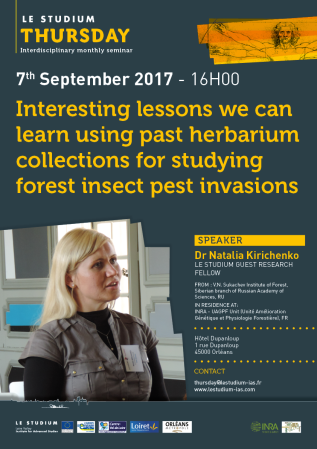Interesting lessons we can learn using past herbarium collections for studying forest insect pest invasions
Hôtel Dupanloup
1 rue Dupanloup
45000 Orléans
France
Presentation
Past herbarium collections have great significance and value to science. They may provide not only important data for plant specialists but can also be extremely useful for entomologists to explore the diversity and abundance of leaf eating insects, origin of invasive species and their early distributions. Larvae and pupae of endophagous insects, such as leaf miners, hidden in tissues of pressed and dried leaves, could be effectively used for integrated analysis, which undoubtedly increases role of herbaria in entomological research. As an example, archival herbarium data was crucial for detection the origin of an invasive horse-chestnut leaf miner and reconstruction its expansion in Europe (Lees et al., 2011). Here we will focus on another invasive insect pest – the lime leaf miner which during the last three decades has spread through most of the Palearctic realm. We will share curious data which we were able to mine from the archival herbarium collections for understanding the invasion history of this insect pest.
Speaker
LE STUDIUM GUEST RESEARCH FELLOW
FROM : Sukachev Institute of Forest SB RAS, Siberian Federal University, Krasnoyarsk, RU
IN RESIDENCE AT: NRA - UAGPF Unit (Unité Amélioration Génétique et Physiologie Forestière), FR







